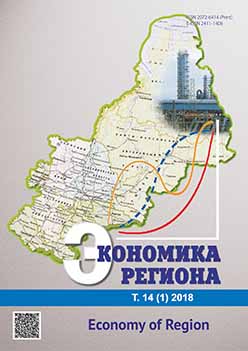Пространственная составляющая в изменении розничного рынка товаров
The Spatial Change of the Indicators of Consumer Market
Author(s): Venera Maratovna Timiryanova, Alexander Fedorovich Zimin, Ekaterina Valerievna ZhilinaSubject(s): Economy, Geography, Regional studies
Published by: Институт экономики Уральского отделения Российской академии наук
Keywords: spatial differentiation; spatial autocorrelation; retail turnover; price index; per capita income;
Summary/Abstract: Improvement of the quality of life throughout the country is a current issue when performing the primary targets of the market. The research on the spatial organization of the consumer market are known worldwide. In Russia, the concept of the spatial organization of the regional consumer market as an economic system included in the region space has not become widespread yet. This paper presents an assessment of spatial differentiation and spatial autocorrelation in the development of the consumer market. We have analyzed retail turnover, price index for goods, per capita income in 82 regions of the Russian Federation for 2000–2016. To study of spatial differentiation and connectedness, we used statistical and econometrics methods (the oscillation rate, standard deviation, coefficient of variation, Moran index, LISA statistics, regression models, including a spatial lag model and spatial error model). The analysis has shown that the space of consumer market in the Russian Federation becomes more homogeneous. At the same time, there are regions with common and different trends in the development of regional markets. We identified the general trends in the indicators variations: retail turnover per capita, per capita income, price index. Under uncertainty, we could identify two groups of regions. The first group of regions is in the European part of Russia and have a higher growth of the price index. The second group of regions is the Asian part of the country and has more moderate growth. The construction of models with a spatial lag and spatial error has allowed confirming that the spatial aspect is important in the dynamics of retail turnover of the Russian Federation. Further research should investigate the dependencies of regions on interregional deliveries as well as find the ways to improve the spatial organization of the consumer market.
Journal: Экономика региона
- Issue Year: 14/2018
- Issue No: 1
- Page Range: 164-175
- Page Count: 11
- Language: Russian

